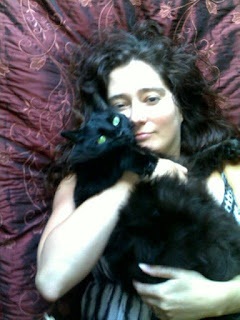A long time ago when I was not so broken and old, I made a point of finishing every book begun, enjoyable, insightful or not. These days, amid the noise of work and childcare, I'll try and give a book 100 pages and then dump it if it's not delivering.
But really that's all distraction from the crux of the story, in which the Doctor faces, again and again, the worst moment in his long life - when he must destroy his own people to save the universe as a whole. This, its effect on him, and the intervention by his friend Clara, is what makes this particular adventure so sad and yet joyous, so effective and even profound.
Steven goes beyond the TV version, which rests on the Doctor restating the promise implicit in his name, that he endeavours never to be cruel or cowardly. The book turns out to be a more fundamental exploration of that promise, and of exactly who the Doctor thinks they are.
It ends on a battlefield in the future, with the Doctor in conversation with two women from her past, quoting words from a TV episode that, long ago, promised the adventures would never end. So this novelisation of old Doctor Who - in more ways than one - is ultimately a witty / optimistic / clever-clever look to the future.
Oh dear, did Simon not get on with the new novelisation of 2013 Doctor Who episode The Day of the Doctor, written by his friend Steven Moffat? And to the extent of then writing an angry post about it, to be read by whole single figures of people? Or is this merely an attention-grabbing prelude?
I got to page 136 of Ann Radcliffe's 1794 gothic novel The Mysteries of Udulpho -
Hah, thought so.
- and things were just starting to occur. After pages and pages of picturesque travel through Gascony, our heroine Emily is orphaned and forced to live with a ghastly aunt, surrounded by her aunt's ghastly friends. They engineer malicious gossip about a nice young man Emily has taken a shine to, and her prospects do not look good...
But the plot and I were making such slow progress, the prospect of another 596 pages was hardly a thrill. And then the five new novelisations of TV Doctor Who stories arrived. I selected Steven Moffat's one at random to read on a trip into town.
And blimey. It's frenetic. I tore through it in very few sittings - which feels all the more remarkable because the book is packed.
Steven retells the events of the TV episode from the point of view of the Doctor, which is immediately tricky because it all happens out of chronological order, and to several incarnations of the Doctor at once. So we start with chapter 8, then chapter 11 and then chapter 1. Between each chapter, a narrator comments on the reliability of the sources - apparently in real time as we're reading.
"(By the way, these pages should be appearing in italics . If not, just give three light taps on any verb, and the page will reboot. And if you don't like any aspects of my prose style, give the book a good shake. That should help you work of your irritation.)"
Steven Moffat, Doctor Who - The Day of the Doctor (2018), p. 3.
It's all very clever, or infuriating or fun, depending on your tastes. Steven packs his book with metatextual jokes - references to Doctor Who books that haven't been written yet, teasing us to look for a chapter that's gone missing, and the idea that the narrator can see us as we're reading. One page is apprently written in our own handwriting.
While the narrative largely follows the events - and dialogue - of the TV episode, Steven has added all sorts of stuff. Each incarnation of the Doctor gets a heroic moment and to go for tea. There are appearances by River Song (in the bath with the Tenth Doctor), the Brigadier and Sarah Jane Smith, and even the Dr Who movies starring Peter Cushing - including what the Doctor thinks of them.
"He loves them. He loaned Peter Cushing a waistcoat for the second one, they were great friends. Though, we only realised that when Cushing started showing up in movies made long after his death."Again, your delight or dismay at this sort of thing may vary, but I found the Brigadier and Sarah bits quite moving - not least because the much-loved actors who played them died in 2011 and so couldn't be part of the TV version. The TV version did achieve a coup of a cameo, and the appearance by an engimatic curator of the National Gallery still provides goosebumps in print (though sadly doesn't confirm my own evidence-based theory that the National Gallery is, in fact, a TARDIS).
Ibid., p. 144.
But really that's all distraction from the crux of the story, in which the Doctor faces, again and again, the worst moment in his long life - when he must destroy his own people to save the universe as a whole. This, its effect on him, and the intervention by his friend Clara, is what makes this particular adventure so sad and yet joyous, so effective and even profound.
Steven goes beyond the TV version, which rests on the Doctor restating the promise implicit in his name, that he endeavours never to be cruel or cowardly. The book turns out to be a more fundamental exploration of that promise, and of exactly who the Doctor thinks they are.
It ends on a battlefield in the future, with the Doctor in conversation with two women from her past, quoting words from a TV episode that, long ago, promised the adventures would never end. So this novelisation of old Doctor Who - in more ways than one - is ultimately a witty / optimistic / clever-clever look to the future.


























































